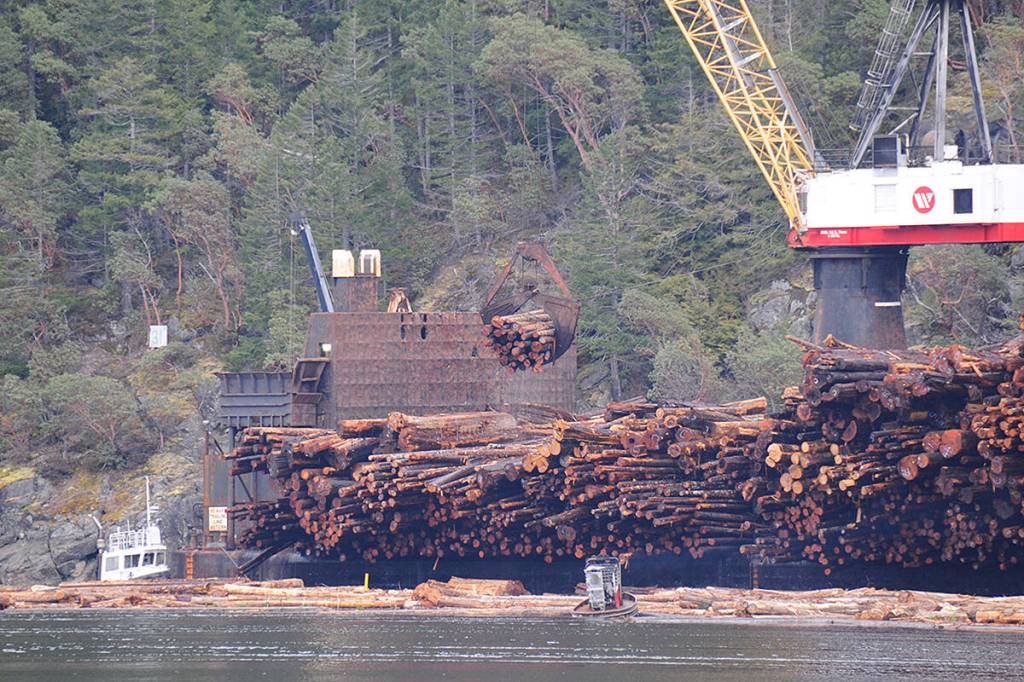Business
B.C. Forestry Sector Faces Crisis as Timber Harvesting Falls Short

The forestry sector in British Columbia is facing a significant challenge as timber availability continues to decline. Conservative Forestry critic and Kamloops-North Thompson MLA Ward Stamer has emphasized the need for immediate changes in timber access policies. During a press conference on October 31, 2023, he urged Forests Minister Ravi Parmar to take action to ensure that local mills receive adequate timber and fibre to sustain operations.
Currently, the provincial government aims to harvest 45 million cubic metres of fibre annually. However, Stamer asserts that the actual figures are closer to 30 million cubic metres, which he believes is insufficient for the sawmills in the province. “That’s not enough fibre to keep the province’s sawmills running, and likely why we have to import wood chips from the U.S. to keep our pulp mills operational,” Stamer stated in a press release.
Stamer is calling for immediate action to address the timber shortage, particularly the harvesting of fire-damaged wood. He criticized the current approach, which he claims delays necessary actions for years. “We need significant changes in how we access fibre in this province,” he added, highlighting the importance of BC Timber Sales delivering at least 20 percent of the annual allowable cut.
In response, Minister Parmar’s office acknowledged the pressures facing the forestry sector, attributing some challenges to factors such as climate change, fluctuating lumber prices, and U.S. trade policies. The Ministry of Forests pointed out that former President Donald Trump‘s tariffs have only exacerbated the situation. “The forestry sector is under pressure from all sides,” the ministry explained, combining these external factors with domestic challenges.
The provincial government initially planned an advertising campaign in the U.S. to counteract these tariffs. However, Premier David Eby opted to withdraw the campaign after observing its ineffectiveness, particularly in light of Ontario’s similar efforts that sparked a backlash from Trump. “I knew that it was a source of anxiety for many people,” Eby commented, explaining that the decision to abandon the ads was made to avoid further complications.
Stamer criticized the government’s handling of the situation, questioning whether Parmar could convince his superiors to implement necessary changes in timber access. He has consistently highlighted the burden of over-regulation in the industry, advocating for a simplification of processes rather than an expansion of rules.
The Ministry of Forests has acknowledged the issue of “layers of red tape” that have hindered BC Timber Sales. In response, a task force was established to review operations and provide recommendations for improvement. Measures being considered include doubling the dedicated fibre supply for value-added wood manufacturing companies and facilitating group bidding for smaller companies in auction processes.
As for the current harvesting figures, the ministry indicated that numerous factors, including record wildfires and conservation measures, have reduced the available timber supply. To address these challenges, the ministry has introduced a new permitting task team aimed at expediting the process for cutting permit applicants.
In light of Stamer’s urgent call for the immediate harvesting of fire-damaged timber, the ministry has accelerated the turnaround time for salvage log permits from 40 days to 25 days. The government is also supporting commercial thinning projects to improve forest health and increase fibre availability.
With the forestry sector at a critical juncture, the call for reform is more pressing than ever. Stamer’s warnings of a “completely collapsed” forestry sector serve as a stark reminder of the need for swift and effective action to secure the future of British Columbia’s timber industry.
-

 World4 months ago
World4 months agoScientists Unearth Ancient Antarctic Ice to Unlock Climate Secrets
-

 Entertainment4 months ago
Entertainment4 months agoTrump and McCormick to Announce $70 Billion Energy Investments
-

 Lifestyle4 months ago
Lifestyle4 months agoTransLink Launches Food Truck Program to Boost Revenue in Vancouver
-

 Science4 months ago
Science4 months agoFour Astronauts Return to Earth After International Space Station Mission
-

 Technology2 months ago
Technology2 months agoApple Notes Enhances Functionality with Markdown Support in macOS 26
-

 Top Stories4 weeks ago
Top Stories4 weeks agoUrgent Update: Fatal Crash on Highway 99 Claims Life of Pitt Meadows Man
-

 Sports4 months ago
Sports4 months agoSearch Underway for Missing Hunter Amid Hokkaido Bear Emergency
-

 Politics3 months ago
Politics3 months agoUkrainian Tennis Star Elina Svitolina Faces Death Threats Online
-

 Politics4 months ago
Politics4 months agoCarney Engages First Nations Leaders at Development Law Summit
-

 Technology4 months ago
Technology4 months agoFrosthaven Launches Early Access on July 31, 2025
-

 Top Stories2 weeks ago
Top Stories2 weeks agoFamily Remembers Beverley Rowbotham 25 Years After Murder
-

 Top Stories6 days ago
Top Stories6 days agoBlake Snell’s Frustration Ignites Toronto Blue Jays Fan Fury





















